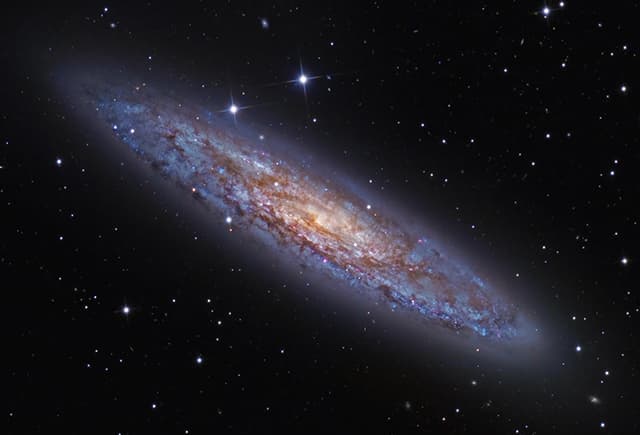‘Cosmic Oasis’ © Marcus Davies
Awards also include a £750 prize for the best photo by an amateur astrophotographer who has taken up the hobby in the past year and who has not entered the competition previously.
The Insight Astronomy Photographer of the Year, which opens for entries on 29 February, welcomes Turner Prize-winning fine-art photographer Wolfgang Tillmans to the judging panel.
Speaking of his passion for astronomy, Tillmans said: ‘Through astronomy I learned about the importance of careful observation and visual study.’
Tillmans added: ‘Astrophotography is a language and fascination that unites people across cultures and all ages and I’m excited to see this year’s crop of images from around the world.’
 Last year’s winning entry, ‘Eclipse Totality over Sassendalen’ © Luc Jamet
Last year’s winning entry, ‘Eclipse Totality over Sassendalen’ © Luc Jamet
Winning images are due to be showcased in a free exhibition at the Royal Observatory in Greenwich, London, from 17 September.
Entrants will be able to submit up to five images by visiting www.rmg.co.uk/astrophoto.
Category winners each stand to pocket £1,500.
The closing date for Insight Astronomy Photographer of the Year is 14 April 2016.
The contest features the following categories:
• Skyscapes: Landscape and cityscape images of twilight and the night sky featuring the Milky Way, star trails, meteor showers, comets, conjunctions, constellation rises, halos and noctilucent clouds alongside elements of earthly scenery.
• Aurorae: Photographs featuring auroral activity.
• People and Space: Photographs of the night sky including people or a human interest element.
• Our Sun: Solar images including solar eclipses and transits.
• Our Moon: Lunar images including lunar eclipses and occultation of planets.
• Planets, Comets and Asteroids: Everything else in our solar system, including planets and their satellites, comets, asteroids and other forms of zodiacal debris.
• Stars and Nebulae: Deep space objects within the Milky Way galaxy, including stars, star clusters, supernova remnants, nebulae and other intergalactic phenomena.
• Galaxies: Deep space objects beyond the Milky Way galaxy, including galaxies, galaxy clusters, and stellar associations.
• Young Astronomy Photographer of the Year: Pictures taken by budding astronomers under the age of 16 years old.









